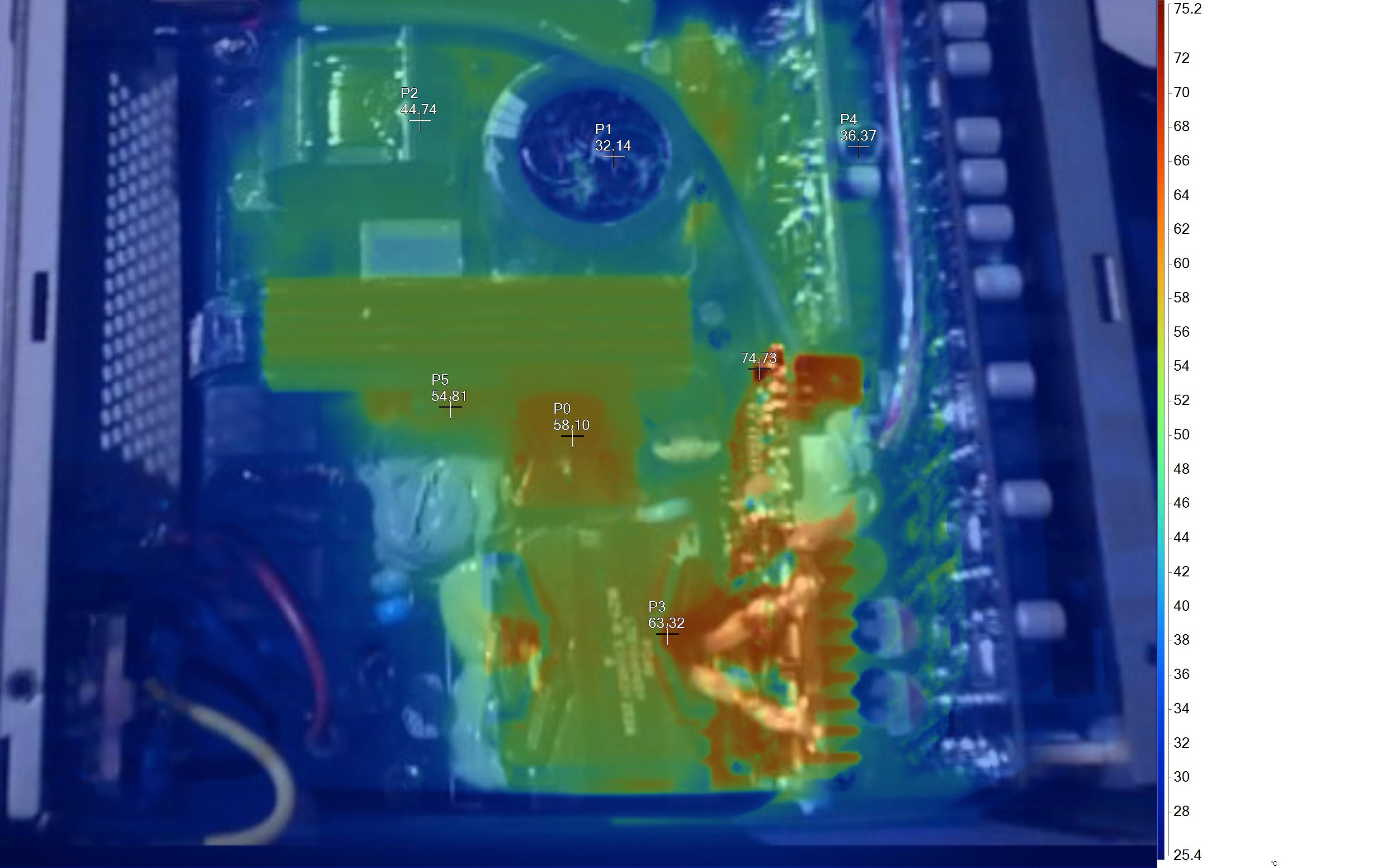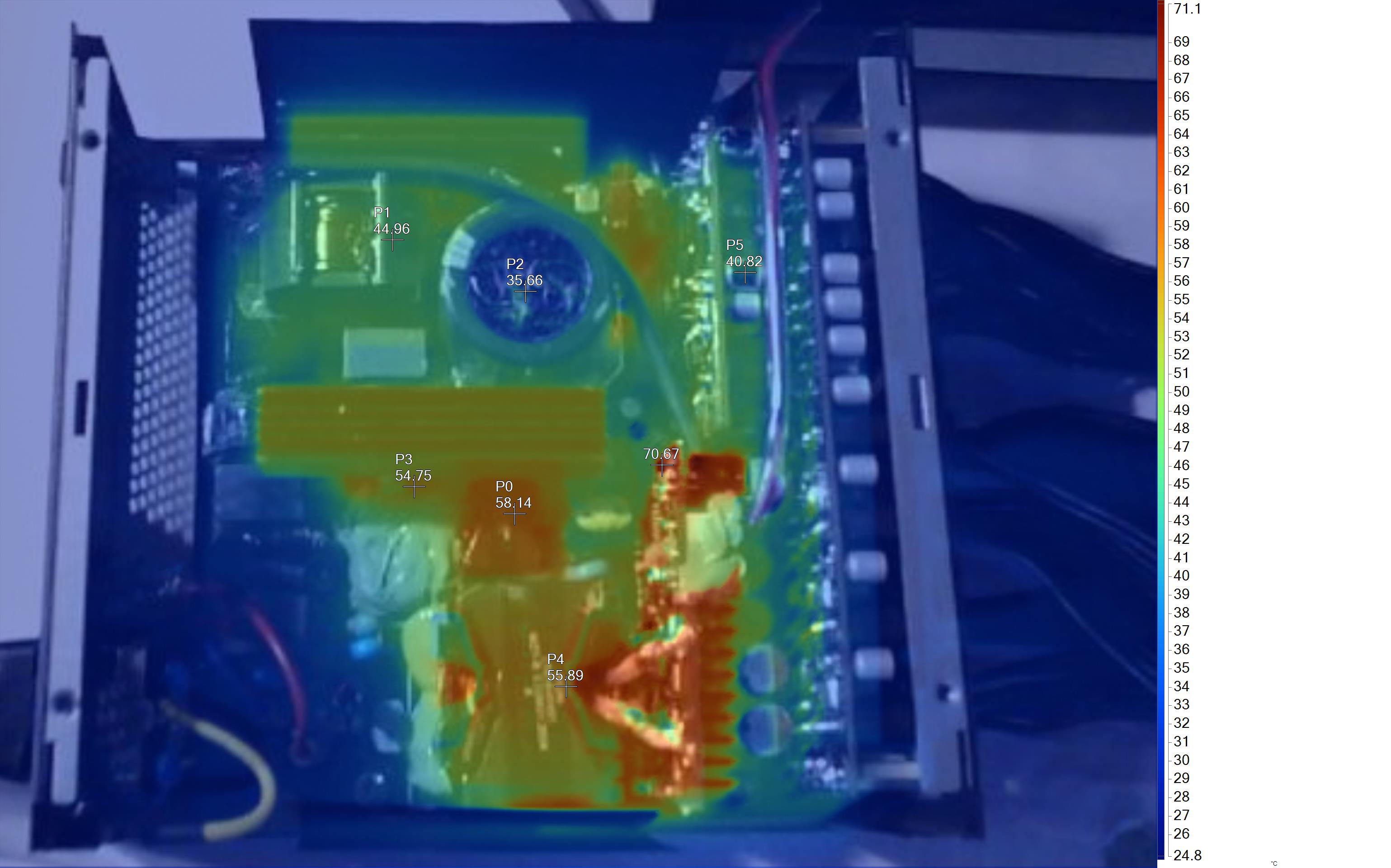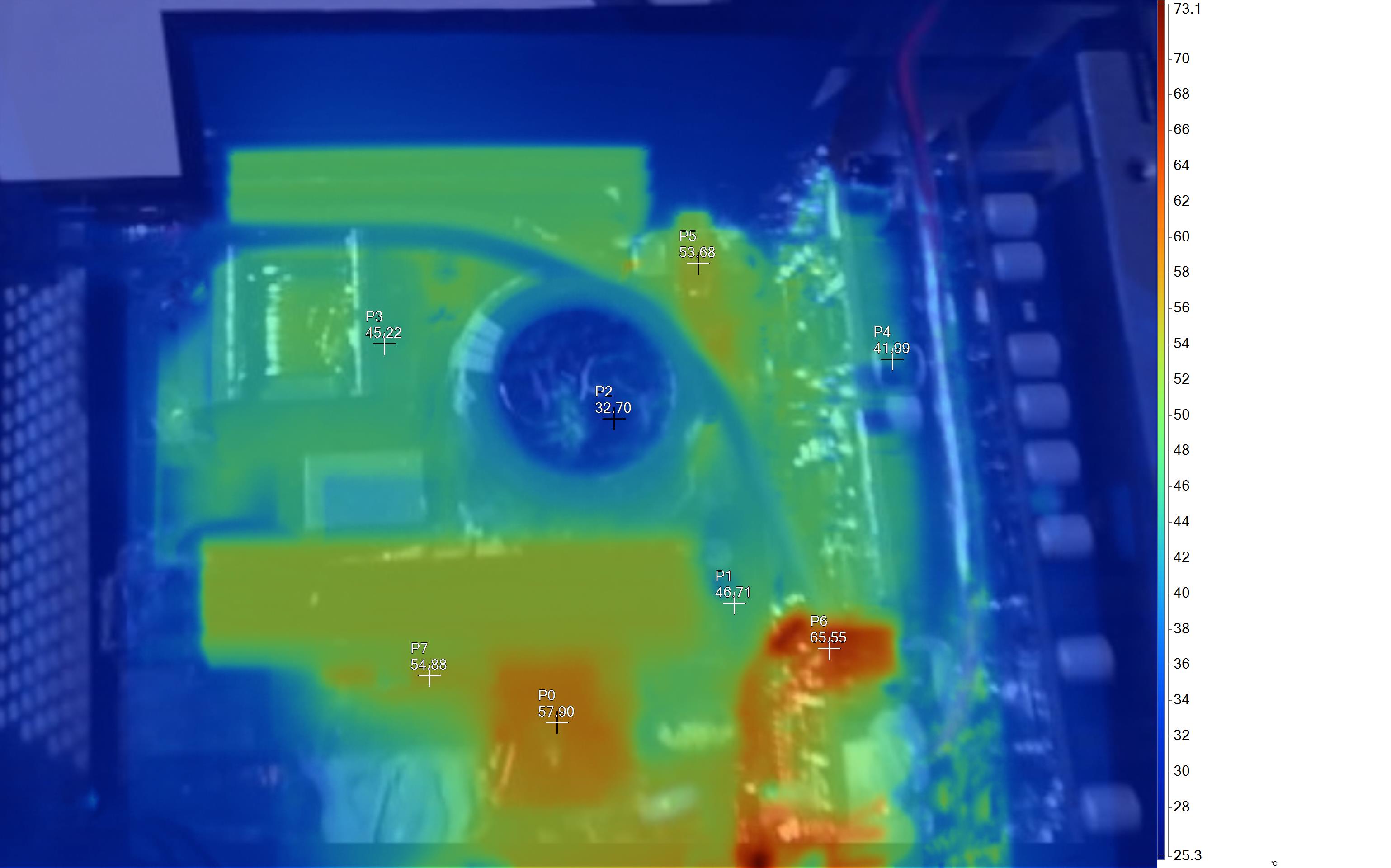Why you can trust Tom's Hardware
Protection Features
Check out our PSUs 101 article to learn more about PSU protection features.
|
OCP (Cold @ 26°C) |
12V: 78.4A (125.44%), 12.123V |
|
OCP (Hot @ 34°C) |
12V: 78A (124.8%), 12.129V |
|
OPP (Cold @ 27°C) |
963.53W (128.47%) |
|
OPP (Hot @ 41°C) |
959.13W (127.88%) |
|
OTP |
✓ (125°C @ 12V Heat Sink) |
|
SCP |
12V to Earth: ✓ |
|
PWR_OK |
Proper operation |
|
NLO |
✓ |
|
SIP |
Surge: MOV |
A PSU's OCP triggering points are ideally set at 12V and the minor rails under hot and cold conditions. The same goes for OPP. OTP's setting looks a bit low, but we didn't encounter any problems during our extremely tough test sessions, so that you won't have a problem, either.
DC Power Sequencing
According to Intel’s most recent Power Supply Design Guide (revision 1.4), the +12V and 5V outputs must be equal to or greater than the 3.3V rail at all times. Unfortunately, Intel doesn't mention why it is so important to always keep the 3.3V rail's voltage lower than the levels of the other two outputs.



No problems here, since the 3.3V rail is always lower than the other two.
Cross Load Tests
To generate the following charts, we set our loaders to auto mode through custom-made software before trying more than 25,000 possible load combinations with the +12V, 5V, and 3.3V rails. The deviations in each of the charts below are calculated by taking the nominal values of the rails (12V, 5V, and 3.3V) as point zero. The ambient temperature during testing was between 30 to 32 degrees Celsius (86 to 89.6 degrees Fahrenheit).
Load Regulation Charts



Efficiency Graph
Ripple Graphs
The lower a power supply's ripple, the more stable the overall system will be and less stress will be applied to its components.




Infrared Images
To take these images, we apply a half-load for 10 minutes with the PSU's top cover and cooling fan removed before taking photos with a modified Fluke Ti480 PRO camera able to deliver an IR resolution of 640x480 (307,200 pixels).
Get Tom's Hardware's best news and in-depth reviews, straight to your inbox.








The hottest parts on this PSU are the boards that hold the 12V FETs and the DC-DC converters that generate the minor rails. There is a heat sink above the 12V board to help cool down the FETs, which does an admirable job here.
MORE: Best Power Supplies
MORE: How We Test Power Supplies
MORE: All Power Supply Content
Current page: Protection Features, DC Power Sequencing, Cross-Load Tests and Infrared Images
Prev Page Load Regulation, Hold-Up Time, Inrush & Leakage Current, Efficiency and Noise Next Page Transient Response Tests, Timing Tests, Ripple Measurements and EMC Pre-Compliance Testing
Aris Mpitziopoulos is a contributing editor at Tom's Hardware, covering PSUs.
-
helper800 A good Cooler Master branded PSU? Wow good on CM to find a good manufacturer. On a side-note what determines whether a product gets an editor's choice award from Toms? Aris seemed pretty happy with the PSU. Lets hope CM keeps using manufacturers that use modern PSU platforms.Reply -
jayjr1105 Great review. nice to see another OEM with 10 year warranty worthy build quality and parts.Reply
Any plans on doing some of the very affordable Superflower Leadex III units?
